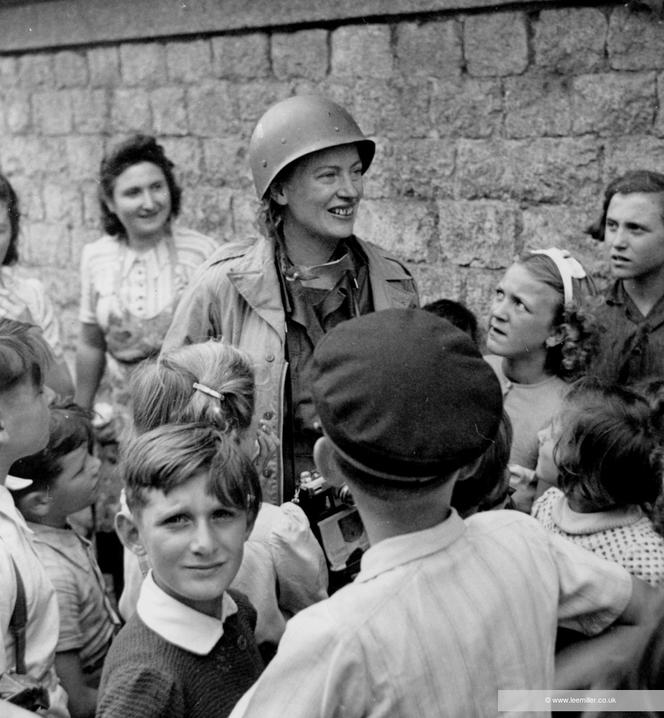At last, Lee Miller is back in Saint-Malo! The American artist, a muse of surrealism and an exceptional photographer, deserved to have the city that was so dear to her heart finally honor her talent. The result is “Saint-Malo Assiégée” (“Saint-Malo Under Siege”), an exhibition featuring 54 photographs taken by the photojournalist between August 13 and 17, 1944, the date of the city’s liberation by the 83rd Infantry Division of the United States.
But Miller, with her Rolleiflex always around her neck, should never have captured the battered faces of the Saint-Malo residents, hastily evacuating their devastated homes. Nor should she have captured those GIs with worried expressions and the German prisoners mortified by defeat but relieved to be alive. History decided otherwise.
As a photographer for Vogue, Miller (1907-1977) landed on Omaha Beach (Calvados) on August 12, 1944. The American Forces Information Service agreed to accredit her and escort her to Saint-Malo (Ille-et-Vilaine), where she was supposed to report on the “day after” with military intelligence having confirmed that the area was secure.
At the time, it was forbidden for women to venture onto the battlefield. Contrary to official reports, Saint-Malo was ablaze. Galvanized by their Prussian commander Colonel Andreas von Aulock who had fought at Stalingrad, the German soldiers, entrenched in the Cité d’Alet where they controlled the port and the bay, put up a fierce resistance. On August 13, when Miller approached the walled town’s ramparts, a maritime paradise so admired by this Francophile, the fighting was intense. The journalist discovered the fear of snipers, the terror of booby traps and the horror of mutilated bodies. Even though she had survived the Blitz in London in 1940, she was experiencing her first war, her “personal war,” she wrote.
Censored photos
And Miller was the only photographer for miles around. Robert Capa (1913-1954), whose images of D-Day published in Life were seen worldwide, had left the area a few days earlier. “Lee Miller was suddenly thrust into war reporting, and showed great courage,” said Hélène Gédouin, one of the exhibition’s two curators. “In fact, she would go on to follow the American troops until the liberation of the Dachau concentration camp in Germany in April 1945.”
The violence that Miller witnessed during those five historic days in August is barely reflected in the photos displayed in Saint-Malo, except for those depicting the relentless air raids. Her images revealing the napalm bombing of the Cité d’Alet by American aircraft were censored by Washington and not published in the October 1944 issue of British Vogue, where her Saint-Malo report appeared, along with an article she had written herself. The United States was determined to keep this new weapon, developed in 1942, secret.
You have 43.09% of this article left to read. The rest is for subscribers only.
